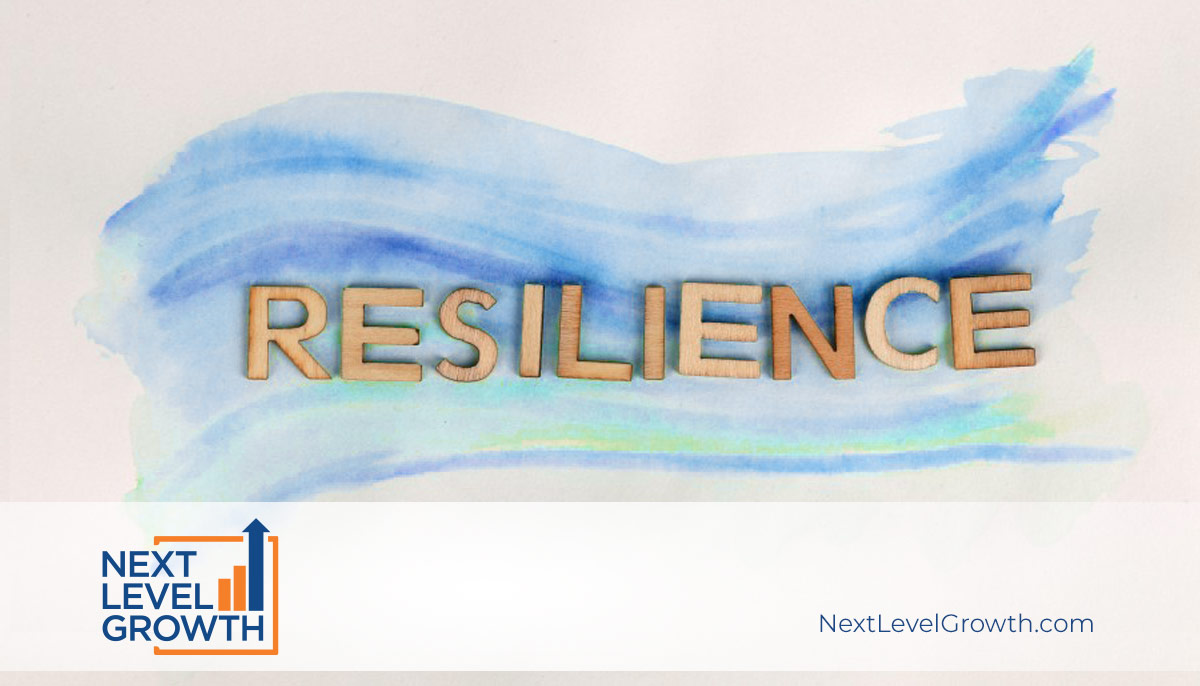There is one common trait that all successful entrepreneurs share—resilience. There are two definitions of resilience I like: “the capacity to recover quickly from difficulties – toughness,” and, “the ability of a substance or object to spring back into shape; elasticity.”
It can be challenging for entrepreneurial spirits to understand why others stay stuck or get defeated easily because we see the opportunities for change all around us. When we, as entrepreneurs, face difficulties, we do our best to spring back and recover quickly because we have no other choice. We get a sense of enjoyment from the challenges because we know it leads to growth.
This mentality can be difficult to carry into your organization. When people feel defeated, how do we inspire them to keep pushing through? How do we not allow minor setbacks to stir up negativity and cause major issues?
There’s a unique characteristic many visionary founders have. They are charismatic. They have the ability to inspire others to see what they see through their rose-colored glasses, past the reality of what’s happening in the present. They can paint a picture of a colorful world that does not yet exist through only their words and passionate delivery. They can leave people in awe and excited to follow their lead. They are the changemakers.
These visionary types have a way of understanding people and their needs. When the organization is small, this charisma is what continues to inspire their team to keep going.
But what happens when you’ve grown so quickly that you now have an army of people? At any given time, half the team could be seeing what you see, on the train moving quickly toward all the possibilities in the colorful promised land. The other half, dragging the team down thinking about jumping off at the next station or slowing it down by grasping tightly to the fear of derailment.
If you want to create a culture of resilience and avoid the inevitable setbacks that come from scaling an organization, you need to prepare for this occurrence and prevent poor performance before it starts.
James Baker, former Secretary of State introduced the 5 P’s: Proper Preparation Prevents Poor Performance.
You need to cultivate the type of environment where development, growth, toughness, and elasticity exists, thrives, and becomes the norm.
You’ll need to teach resilience by naming it, discussing how it shows up inside your organization, and explaining why it’s critical to everyone’s success.
It can no longer come from just you as the visionary founder. Resilience will need to exist in every member of the team and be strengthened by its leadership.
“Resilience comes from deep within us and from support outside us. It comes from gratitude for what’s good in our lives and from leaning into the suck.” Sheryl Sandberg, Option B: Facing Adversity, Building Resilience, and Finding Joy.
As people that embrace the suck, we know the trait of resilience comes from within, but we can forget that the support outside of us is what keeps that light on. This is what we need to be for our team. The light that helps others see what’s possible.
How do we cultivate resilience in our organizations?
Brene Brown, American professor, lecturer, and best-selling author writes in the book Gifts of Imperfection: “having a sense of purpose, meaning, and perspective in our lives allows us to develop understanding and move forward. Without purpose, meaning, and perspective it is easy to lose hope.”
If you are working towards building something great, you have a sense of purpose that keeps you going. You may or may not have named exactly what that purpose is, but it gives you hope of a brighter future which helps you overcome adversity more easily.
We know that external motivation only gets us so far. Motivation from outside yourself can be helpful, but being internally motivated by your own values and goals is the only sustainable approach that provides long-lasting and more meaningful results.
To build an organization that cultivates resilience start here:
- Help individuals find their own sense of purpose.
Purpose comes from deep within. It’s personal. As leaders, it’s our job to help people discover their own purpose and tie it to their role in the organization.
- Create meaning around goal setting.
When people know their purpose, they need to set goals that allow them to live out their purpose. Help your team develop a deeper connection to their goals through the lens of their personal purpose.
- Show people they can remain optimistic through gratitude.
A practice of gratitude helps people see the good in everything. When something doesn’t seem great on the surface, we can help others shift their perspective to gratitude and away from negativity.
- Tie the company’s goals to the individual’s goals.
Real buy-in only occurs when personal goals and values are aligned with organizational goals. To tie your team’s internal motivations with the goals of the organization you help people show up as their best selves and continue to perform at a high level.
- Support internal motivation through external motivation.
Helping people connect with their sense of purpose creates internal motivation. As humans, it can be hard to sustain motivation. High-performers seek out coaches, advisors, and accountability partners but your team might not see that as an option. Weave coaching, mentorship, and accountability throughout the company so it’s reinforced at every level.
Cultivating a culture of resilience strengthens your team’s ability to overcome obstacles and turn threats into opportunities. When everyone inside the organization practices resilience your team will be unstoppable.
Free Quarterly Coaching Conversations Download
A great starting place to cultivate a culture of resilience is to integrate quarterly coaching conversations. Download this overview to get started.
Next Steps
- Start a conversation with us today to learn about our unique approach to taking your business, and your life, to the Next Level.
- Not ready to schedule an audition? Sign up to receive our blog posts and continue getting to know us.
- Learn About the WHY Behind the Next Level Growth approach


